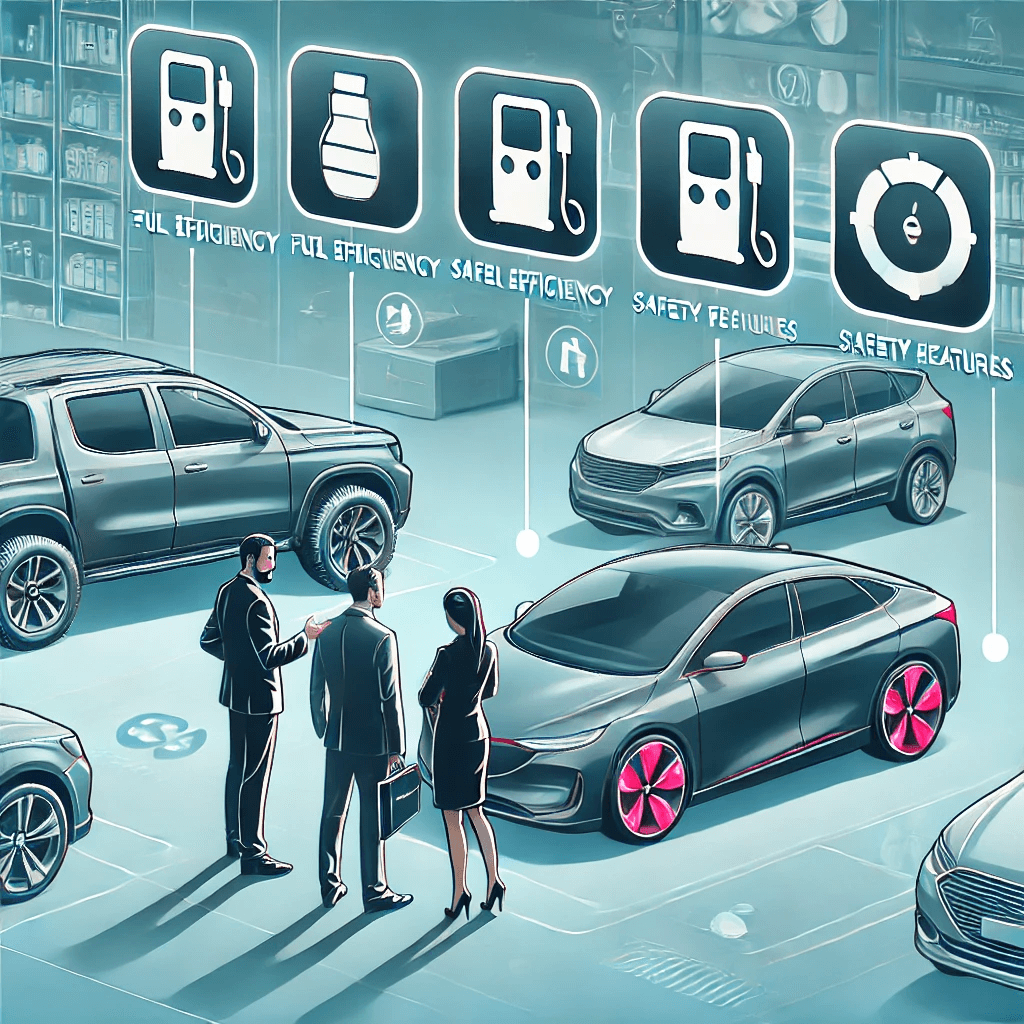Introduction
When you decide to buy a new car, the variety of options can feel overwhelming. With so many makes, models, and features available, choosing the best car to meet your needs requires careful thought. Whether you’re purchasing your first new car or upgrading to a different model, this guide will help you evaluate your lifestyle, preferences, and budget to make the best choice.

Assess Your Needs and Lifestyle
The first step in choosing the best type of car is to assess your specific needs and lifestyle. Consider how you will primarily use the vehicle and what features are most important to you.
Questions to Ask Yourself:
- What is the primary use of the car? Will you be using it mainly for commuting, long-distance travel, or weekend adventures? The type of driving you do most often can significantly influence the kind of car that will best serve you.
- How many passengers will you typically have? If you frequently drive with family or friends, a car with more seating capacity, like an SUV or minivan, might be necessary. For solo drivers or couples, a smaller car could suffice.
- What kind of cargo space do you need? Think about whether you need a lot of trunk space for groceries, sports equipment, or luggage. Some vehicles, such as hatchbacks and SUVs, offer flexible cargo space that can be expanded by folding down seats.
Consider Your Budget
Your budget plays a crucial role in determining which type of car fits within your financial limits. It’s important to set a realistic budget that includes not only the purchase price but also ongoing costs such as fuel, insurance, maintenance, and repairs.
Budgeting Tips:
- Determine Your Price Range: Know how much you can afford to spend on a new car without stretching your finances too thin. Consider what monthly payments would be manageable based on your income and expenses.
- Calculate Total Ownership Costs: In addition to the upfront cost, consider the long-term costs of ownership. This includes fuel efficiency, insurance premiums, routine maintenance, and potential repairs.
- Look for Financing Options: If you plan to finance your car, shop around for the best loan rates. Getting pre-approved for a loan can give you a clear picture of your budget and strengthen your negotiating position.
Evaluate Different Car Types
Once you have a clear understanding of your needs and budget, it’s time to evaluate the different types of cars available. Here are some popular car types to consider:
- Sedans: Sedans are a great choice for individuals or small families who prioritize fuel efficiency and a comfortable ride. They offer a good balance of performance, affordability, and comfort, making them ideal for commuting and everyday use.
- SUVs and Crossovers: SUVs and crossovers are popular for their spacious interiors, high seating positions, and versatile cargo space. They are well-suited for families, outdoor enthusiasts, and anyone who needs extra room for passengers and gear. Many SUVs also offer AWD or 4WD for enhanced capability in various driving conditions.
- Hatchbacks: Hatchbacks combine the compact size and fuel efficiency of a sedan with the added benefit of a flexible cargo area. The rear hatch door allows for easy loading and unloading, making hatchbacks a practical choice for city dwellers and those who need more storage space without sacrificing fuel economy.
Test Drive Multiple Vehicles
Taking a test drive is an essential part of the car-buying journey, offering firsthand insight into the vehicle’s performance and comfort. It allows you to experience the car firsthand and determine if it meets your expectations for comfort, performance, and handling.
Key Things to Check During a Test Drive:
Comfort and Ergonomics: Pay attention to how comfortable the seats are and whether the driving position feels natural. Make sure all controls are easy to reach and use.
- Handling and Performance: Test the car’s acceleration, braking, and cornering to see how it handles in different driving conditions. Listen for any abnormal sounds or vibrations that might suggest potential mechanical problems.
- Technology and Features: Explore the car’s infotainment system, navigation, and any advanced safety features. Make sure these systems are intuitive and operate smoothly.
- Visibility and Safety: Evaluate how well you can see out of the vehicle, including checking for blind spots and the effectiveness of any driver-assistance features like rearview cameras or blind-spot monitoring.
What to Consider When You Buy a New Car to Find the Best Fit
Here are some key factors to consider when searching for the perfect vehicle:
Driving Habits:
Your daily driving habits play a significant role in determining the best type of car for you. If you frequently drive in the city, a compact car with good fuel efficiency and easy maneuverability might be ideal. For long highway commutes, you might prefer a sedan or SUV that offers a smooth, comfortable ride and advanced driver assistance features.
Space and Capacity Needs:
Consider how much space you need for passengers and cargo. If you have a family or often travel with friends, a car with a spacious interior and ample seating might be necessary. Alternatively, if you frequently transport large items, look for vehicles with flexible cargo space, like hatchbacks or crossovers with foldable rear seats.
Fuel Efficiency:
Fuel efficiency is a crucial factor, especially with fluctuating gas prices and environmental concerns. Decide if a hybrid or electric vehicle aligns with your budget and driving needs, or if a traditional gasoline engine with good miles per gallon (MPG) will suffice for your daily routine.
Conclusion
Choosing the best type of car for you involves careful consideration of your needs, budget, and preferences. By assessing how you will use the vehicle, researching different car types, test-driving multiple models, and negotiating wisely, you can make a well-informed decision that suits your lifestyle and provides long-term satisfaction. Remember, the goal is to find a car that not only meets your immediate needs but also offers reliability, comfort, and value for years to come.














